#maría teresa león
Text
Zenobia Camprubí acaba de recibir el premio Nobel. Me diréis: No, estás confundida, el premio Nobel fue para Juan Ramón. Pero yo contestaré: ¿Y sin Zenobia, hubiera habido premio? [...] Fue la suya una decisión hermosísima: vivir al lado del fuego y ser la sombra.
"Memoria de la melancolía", María Teresa León.
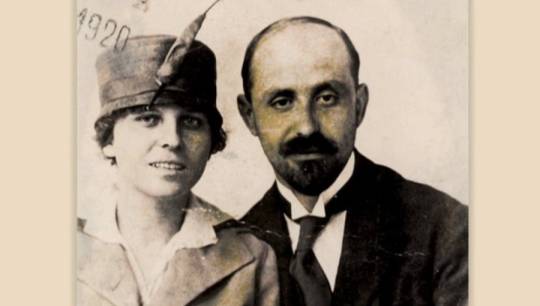
11 notes
·
View notes
Photo
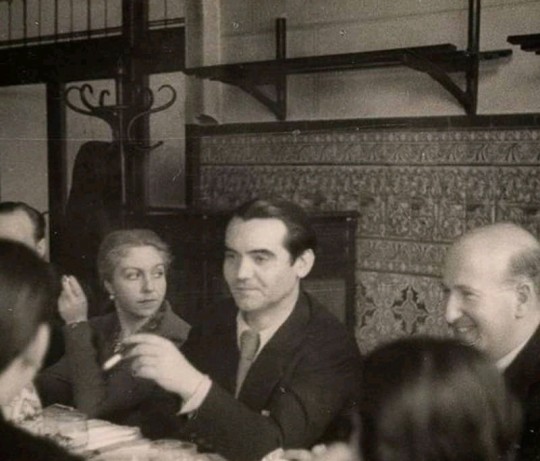
María Teresa León, Federico García Lorca e Vicente Aleixandre
26 notes
·
View notes
Text
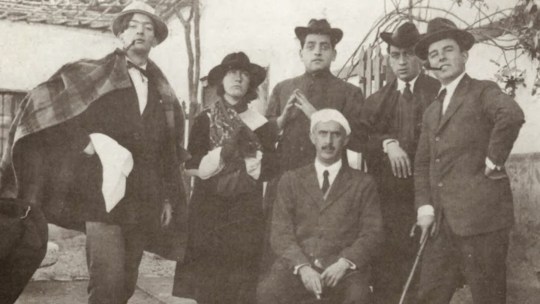
A century of the Order of thuggish and drunken knights: Lorca, Dalí and Buñuel partying in Toledo
Federico García Lorca was wrapped in a sheet stolen from the Posada de la Sangre – which disappeared in the Civil War and was the scene of Miguel de Cervantes's The Illustrious Mop –, drunk as a thief and with the desire to wander alone through the narrow streets of the old town of Toledo. Around him, some young hooligans laughed with the poet with noise and hubbub. This is how a Toledo man named Eduardo met the playwright from Granada during a Toledo night in the 1920s. At that moment, this kind man, seeing the panorama, tried to take Lorca to the relief house on Barco Street, but He flatly refused to accompany him. The poor man, of course, did not understand anything.
What this Toledoan, grandfather of the author of the space Toledo Olvidado, who is the one who told this anecdote, did not know is that Lorca was complying with one of the strict rules of the well-known Order of Toledo, a brotherhood of artists and writers related to the Generation of '27 and the Madrid Student Residence created by Luis Buñuel – calling himself Condestable – in the Venta de Aires de Toledo restaurant in March 1923.
This is how a century ago the streets of Toledo could not believe what was happening on its cobblestones. One hundred years since Buñuel, with his idea, managed to revolutionize the students of the Residence and the silent alleys of the old town of Toledo. Despite such famous components, the truth is that little or very little is known about this Order of Toledo. There is not much documentation available, beyond the stories of the protagonists themselves. Buñuel, the architect of this mischievous and intellectual action, dedicates an entire chapter to the Order in My Last Sigh, his autobiography written in his exile in Mexico.
A religious revelation and the smell of wine
«I am walking through the cloister of the cathedral, completely drunk, when, suddenly, I hear thousands of birds singing and something tells me that I must immediately enter the Carmelites, not to become a friar, but to steal the convent's treasury. The doorman opens the door for me and a friar comes. I tell him about my sudden and fervent desire to become a Carmelite. He, who has undoubtedly noticed the smell of wine, walks me to the door. The next day I made the decision to found the Order of Toledo," explains Buñuel in the aforementioned autobiography.
The rules of the Order of Toledo are strict and taken very seriously by its members. So much so that some of them even had a little problem or another in 1936, as the poet José Moreno Villa told us from Mexico, after the outbreak of the Spanish Civil War. "This order is a bit communist," thought some "men alien to letters and much more alien to irony"; although the truth is that there was only a hint of provocation in this crazy association. A normal thing among extravagant artists, somewhat dadaist, somewhat surrealist. «The starting point was to have fun, have a good time and get drunk. But it is true that, personally, I have always related what these young people did in Toledo with the historical avant-garde of the moment. I see it as the performances that the Dadaists did in Paris and Zurich, which were things that didn't make much sense, as Surrealism later adopted. In fact, it is worth noting that some members of this Order of Toledo were part of the Paris surrealist group, like Buñuel or Dalí himself,” explains Juan Carlos Pantoja, author of The Order of Toledo: imaginary avant-garde walks*.
Pantoja also details that, possibly, there were some precedents to Buñuel's Order of Toledo because "there was already a group of great intellectuals, among whom were Américo Castro, Alfonso Reyes, Antonio García Solalinde or Moreno Villa, who met in Toledo to walk at night and drink wine from 1917 onwards. He details that "they stayed in a rented house on Cárcel del Vicario street, in front of the Cathedral, and they became known as the gathering of El Ventanillo, due to the existence of a small window with views of the Valley. Buñuel says that he got to know Toledo accompanying Solalinde, so we can think that perhaps the Aragonese was at some point in these gatherings and that, from there, the idea of doing something similar arose.
Pepín Bello – who left no work, but was a friend to everyone, as gallery owner Guillermo de Osma once commented –, Rafael Alberti, Dalí, María Teresa León and Federico García Lorca and his brother, among others, were part of the Brotherhood created by way improvised by Buñuel that had something of a "poetic act", according to the poet from Cádiz. And the students of the Residence were lovers of Toledo, according to Bello in an interview in 2000:« We took the train from Madrid to Toledo, we traveled in third class and it took us two hours to arrive. We went up from the station and went to drink in the taverns of Zocodover, which was very close to the Posada de la Sangre, to get into the mood a little »
Order of Toledo: drink wine and do not shower
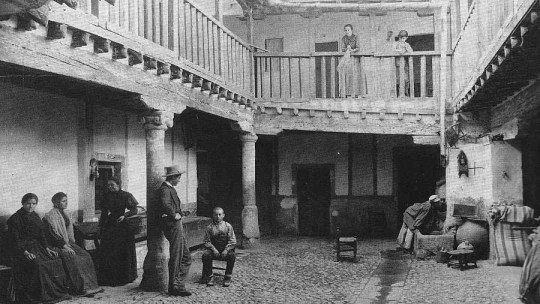
Courtyard of the Blood Inn
Among the rules of the Order of Toledo, and which Buñuel said with his Calanda crudeness, was that of not washing or showering "while the visit in this Holy City lasted." They had to go to Toledo once a year, watch over Cardinal Tavera's tomb, love Toledo above all and, of course, "wander, especially at night, through the wonderful and magical city of the Tagus," according to Alberti. "Those who preferred to go to bed early could not qualify for the rank of knight, little more than the title of squire," explains Buñuel in his autobiography. Furthermore, Pantoja details, "each of the members had to contribute ten pesetas to the common fund for accommodation and food and to go to Toledo as frequently as possible and put themselves in a position to live the most unforgettable experiences." Bello points out, recalling Toledo's adventures in an interview, that "we stayed at the Posada de la Sangre because we were students and it was difficult for us to sleep for just one peseta. Of course, it was a place of dubious cleanliness, where mainly muleteers stopped with their animals. The poet María Teresa León, in her book Memory of Melancholy, also remembered that this inn “had little rooms with just one bed. There, Rafael [Alberti], that night we didn't talk about El Greco, but we did talk about bedbugs. Toledo bedbugs! Toledoan night! I turned on the light. How well Rafael slept with his chest crossed by hundreds of little animals frantically searching for the hiding place of poetry!
Alberti precisely explains in The Lost Grove that "the brothers left the inn when the cathedral clock struck one, a time when all of Toledo seems to narrow, become even more complicated in its ghostly and silent labyrinth" and also relates in detail how He experienced firsthand his initiation into the Order of Toledo, with some fear at not knowing anything about the labyrinthine streets of Toledo.
«We went out into the street, carrying all the brothers, except me, hidden under the jacket, the sleeping sheets, taken out quietly. The poetic act was going to consist of bringing to life an entire theory of ghosts in the atrium and plaza of Santo Domingo el Real. After weaving and unweaving steps between the deep crevices of sleeping Toledo, we ended up at the convent at a moment when its defended windows lit up, filling them with veiled songs and monkish prayers. While the monotonous prayers went on, the brothers, who had left me alone at one end of the square, covered themselves with the sheets, seeming slow and distanced, white and real ghosts from another time. The suggestion and fear that I began to feel were increasing, when suddenly, the dressed visions appeared, shouting at me: 'This way, this way!', sinking into the narrow alleys, leaving me - one of the worst tests I have ever faced. the novices were subjected – abandoned, alone, lost in that frightening winding of Toledo, without knowing where I was and without the possibility of someone showing me the way to the inn, in addition to not finding a single passerby at that point in the night, in Toledo, if they don't inform someone every 30 meters, you can consider yourself lost definitively. At dawn I found the Posada de la Sangre, and I went to sleep, happy with my first adventure as an initiate into the mysteries of the Toledo order,” Alberti recalled years later.
Food and comedy at Venta de Aires
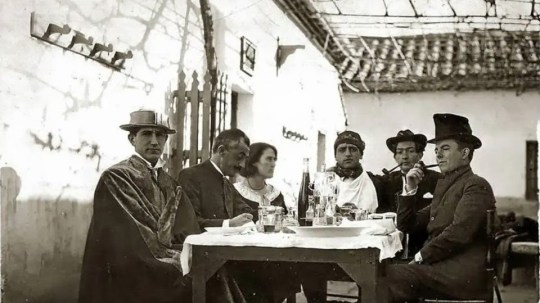
Members of the Order of Toledo, at the Venta de Aires
In Toledo, the members of this order ate, explains Buñuel, "almost always in taverns, such as Venta de Aires, on the outskirts, where we always ordered tortilla on horseback - with pork -, a partridge and white wine from Yepes." . There, in this sale, the friends performed for the first time Don Juan Tenorio, by José Zorrilla, dressed in improvised costumes, where we see that Buñuel is dressed as a parish priest, an irreverence with respect to the church and the double standards of its members that We will always see them reflected in their films. «With regard to this, this relationship between artists and religion, Max Aub told the anecdote that while walking through Toledo they found a Virgin in a niche on the street, it could be the one still located on Alfileritos Street, although it is not documented, that Dalí began to pray in a devout and tender manner, but suddenly began spitting at her angrily and insulting her. He went from one thing to another in an incomprehensible way, once again showing off his surrealist thinking," explains Pantoja.
Alberti says that also on the walls of the Venta de Aires, the brothers of the Order had left the mark of their art. «Under the arbor, the patio of our banquet, the main brothers were portrayed in pencil on the whitewash of the wall. Its author, Salvador Dalí, was also among them. Someone told the innkeepers not to whitewash them, that they were worthy works by a famous painter and that they were worth a lot of money. Despite the warning, years later they no longer existed. They had been erased by new owners of the sale," explains the poet. After eating, they returned to Zocodover, always on foot, making "an obligatory stop at the tomb of Cardinal Tavera, sculpted by Berruguete. A few minutes of contemplation in front of the recumbent statue of the cardinal, dead of alabaster, with pale and sunken cheeks, captured by the sculptor one or two hours before the putrefaction began," adds the filmmaker.
Fisticuffs with the cadets of the Military Academy
Upon returning to the old town, the Order even experienced some fights with the cadets of the Toledo Military Infantry Academy, after some of them rudely complimented María Teresa León, an anecdote that she herself tells. «At I don't know what time, just when we were visiting some taverns to balance with so much church, we came face to face with a group of uniformed boys, who turned to me and said: 'Blonde, I would eat you with suit and with everything'. Buñuel rolled up the sleeves of his shirt and when he saw him advance, the boys ran out so as not to commit themselves to Aragon, a region where the insults are harsher. They caught up with them and, after several punches, the cadets were defeated. A neighbor handed us a jug: 'Drink, drink. These cadets always making a fuss!' Meanwhile, she licked her lips with pleasure because the civilians had beaten the military, those boys are always on the hunt for Toledoan girls," León said.

Rafael Alberti and María Teresa León, poets of the Generation of '27 and members of the Order of Toledo
A confrontation with the military that Buñuel also remembers, although in a somewhat less refined way than the poet. The film director explains in his memoirs. «The cadets were really scary. One day we came across two of them and grabbing María Teresa, Alberti's wife, by the arm, they told her: 'How horny you are.' She protests, offended, I go to her defense and knock down the cadets with my fists. Pierre Unik comes to my aid and kicks one of them. There were seven of us and the two of them, we did not boast. We leave and two civil guards who had seen the fight from afar approach, instead of reprimanding us, they advise us to leave Toledo as soon as possible, to avoid the revenge of the cadets. We don't pay attention to them, and for once, nothing happens».
The Order of Toledo in Tristana
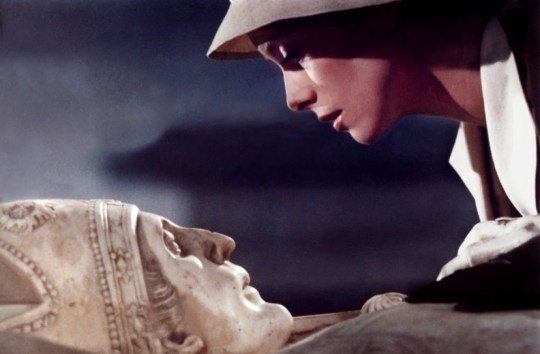
This entire Order of Toledo is reflected in Tristana, the film that Buñuel would shoot here in Toledo. Pantoja defends that "he winked at his youthful adventures, with Catherine Deneuve wandering the streets and visiting Cardinal Tavera, and bringing his face closer to him, which is one of the great images of the film." «That Order of Toledo laughed at everything, nothing was taken too seriously. They laughed at art, like the futurists did, who advocated burning museums and libraries, and they did everything, in addition, in a groundbreaking way. Their lives, without a doubt, were pure avant-garde," concludes Pantoja.
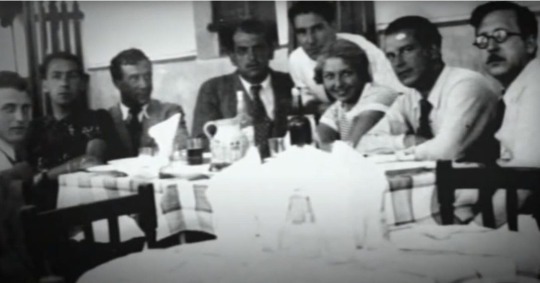
* I have scans of this book, I am planning to publish them here on Tumblr on a series of posts
#la orden de toledo#caballeros de la orden de toledo#knights of the order of toledo#federico garcía lorca#luis buñuel#salvador dalí#order of toledo#maría teresa león#rafael alberti#pepín bello#josé moreno villa
2 notes
·
View notes
Text

Rafael Alberti y María Teresa León | Roma
0 notes
Text
La Fundació CNSE crida a fer de la lectura un dret, i no un luxe, per a la infància sorda
servimedia
La Fundació Confederació Estatal de Persones Sordes (CNSE) va reconèixer a cinc centres escolars de Madrid, Múrcia, Terrassa i València amb els premis del concurs estatal de contes en llengua de signes per al foment de la lectura, i va reclamar que la lectura sigui un dret, i no un luxe, per a la infància sorda…[…] (servimedia.es)

View On WordPress
#CEIP Santa María de Gracia#Centro educativo Ponce de León#Colegio Gaudem#Colegio Luis Fortich-IVAF#Escola El Vapor de Terrassa#Francisca García Vizcaíno#Fundación CNSE#Jesús Martín#Mohamed Rida#Nil Morera#Pablo Fernández#Roberto Suárez#Teresa Goizueta
0 notes
Text

Rosario de Velasco
The Hullabaloo Gave Him Serious Nightmares, drawing for María Teresa León’s book Cuentos para soñar (Tales to dream about) (La algarabía ciudadana proporcionó serias pesadillas, 1927. Dibujo para el libro Cuentos para soñar de María Teresa León)
1927, scan via artblart
Ink on paper
42.3 × 32.5cm
Gonzalez Rodriguez Collection
Photo: Jonás Bel
© Rosario de Velasco, VEGAP, Madrid, 2024
49 notes
·
View notes
Text
what is a phyrge?: bonus content
the spanish women's national team call-ups by xavi (an actually decent coach of the spanish women's national team in the evie-verse)

goalkeepers: Cata Coll, Misa Rodriguez
defenders: Ona Batlle, Irene Paredes, Laia Aleixandri, Mapi León, Leila Ouahabi, Olga Carmona Laia Codina
midfielders: Patri Guijiarro, Aitana Bonmatí, Alexia Putellas, Teresa Abelliera, Vicky López
forwards: Clàudia Pina, Salma Paralluelo, Mariona Caldentey, Athenea del Castillo, Jenni Hermoso
reserves: Lola Gallardo, Alba Redondo, María Méndez, Jana Fernandez
edit: i got my laia's confused and thought i had both laias in there (codina and aleixandri) and i don't, olga carmona is meant to be laia codina, i don't know what happened when i made this, i got confused
11 notes
·
View notes
Text
Debemos poder leer, indica también Zuleta, siguiendo a Nietzsche en su Zaratrusta, como un camello, como un león y como un niño. Como un obrero que hace trabajar su pensamiento, como un rebelde que rechaza todas las formas de imposición o jerarquía y como un niño que en su inociencia siempre está comenzando. Tres condiciones para no leer por leer, para hacerlo como un aventurero, no sólo como un lector capaz de interpretar, sino como un lector capaz de permitir que el texto lo afecte en su ser mismo, en su ser más íntimo, y lo lleve por nuevos caminos de conocimiento hasta dar con aquello que lucha por hacerse visible aun a riesgo de transformarnos. Leer no es sólo consumir libros, sino convertirnos en camello, león y niño a un mismo tiempo, para corrernos de la equívoca idea de leer como distracción, cuando más bien uno lee para concentrarse, para encontrarse con uno mismo, del mismo modo que uno escribe, o debería escribir, no como una tarea de ensoñanción sino como una búsqueda de plenitud de conciencia. Todo buen libro nos invita a ensimismarnos y entonces la cuestión no es exactamente la cantidad de libros leídos, aunque la diversidad y el número también sean importantes. La cuestión es, sobre todo, cómo se lee y cómo se invita a otros a leer.
—María Teresa Andruetto, La lectura, otra revolución, "Elogio de la dificultad: formar un lector de literatura" (p. 85)
4 notes
·
View notes
Text
Buenos Presagios Español

Azirafel/Andrés Rafel (Carlos areces). Maricona de pueblo de toda la vida, dice "reina", "hija", y "mi vida" a todo el mundo. Y todo el mundo asume que es del sur. Cita mucho a Neruda. Le regalas una cajita de torreznos/morcilla/chorizo y es feliz.

Sierpe/Antonio Serra (Luis Zahera). Imagínatelo con un palillo en la boca, cadenas de oro, anillos de oro, y pantalones de cuero. Dice "maricón" como tú dices "colega". Te saluda palpándote el culo. Solo escucha a Joaquín Sabina y Bunbury.

Sargento Salgado (Ricardo Arroyo). Vive de campurrianas y galletas María, principalmente. Asturiano. Es tan viejo que no dice "marica", no, dice "bujarrón", y lo dice generosamente. Su mejor amigo es un tetrabrick de Don Simón. Cree que "hereje" es un insulto.

Madame Tracy (pero en realidad se llama María Teresa) (Loles León). Comienza casi todas sus frases con "¡HUY!" o "PUES". Se viste medio de folclórica y colecciona baldosas decorativas con frases tópicas. Sirve Colacao en todas sus sesiones. Muy buena onda gay.
Si alguien tiene más ideas que me diga.
#good omens#buenos presagios#estaba pensando en paco león como newt pero es que paco no tiene cara de newt#la gemma cuervo de monja satánica en cambio...
5 notes
·
View notes
Text
"Pero qué horrible es que los recuerdos se precipiten sobre ti y te obliguen a mirarlos y te muerdan y se revuelquen sobre tus entrañas, que es el lugar de la memoria."
—María Teresa León
4 notes
·
View notes
Text
El lado oscuro del amor: La historia de un caso real de cachos
Durante casi toda la historia de la humanidad, estuvimos regidos en Europa (yo soy de allí) por monarquías, un sistema basado en un grave error de concepto: los descendientes de los reyes que regían una nación, seguramente heredarán las características físicas y de liderazgo de sus ancestros (en un principio los reyes eran aguerridos conquistadores), por esta razón, sus hijos gobernarían de idéntica forma a la de sus padres y sus abuelos (si bien la idea tiene cierta lógica, ya sabemos que la genética no sigue los principios de la alta aristocracia sino los propios, y que algunos reyes terminaron saliendo «chiveados» y en vez de parecerse a Ricardo corazón de León, se terminó pareciendo al borracho de la esquina de tu barrio). Con el paso de los años y viendo los engendros que salían después de producirse varios matrimonios entre primos, hermanos o hijos, los súbditos se percataron de que esta regla no se cumplía para nada, más bien al contrario.
Como las leyes de la genética de Mendel todavía no estaban escritas, y mucho menos aún se sabía de el ADN y cómo esté funcionaba, los reyes pensaron que sería buena idea casar a sus príncipes con las hijas de monarcas o aristócratas de otras comarcas para reforzar vínculos políticos y también económicos con sus países vecinos y que los beneficios aristocráticos siguieran siempre en manos de los mismos. Al cabo de unos siglos, todos los reinos de Europa compartían lazos de sangre, aumentando así los riesgos de transmitir a los futuros mandatarios enfermedades de origen genético.
Sin embargo, había algo que podía salvar a Europa y que ésta fuese gobernada por monarcas «retrasados mentales» cómo la historia nos ha enseñado que en varias ocasiones ha sido, y esto era la gran promiscuidad de los mismos que permitía la introducción de genes nuevos a través de esas relaciones. Normalmente éstas infidelidades reales pasaban desapercibidas o no se les daba mucha importancia. Pero hubo un caso muy especial. La hija negra de Luis XIV de Francia, el Rey Sol.
María Teresa, la hija de Felipe V de España, contrajo matrimonio con ‘El Rey Sol’ en el año 1660. Los primeros meses el matrimonio parece que fueron relativamente bien, pero después pasó a ser un infierno para la reina debido a las muchas infidelidades del Rey. Según sé sabe, fue una boda de conveniencia, y cómo es natural en estos casos, al poco tiempo se fue la pasión y llegó la realidad, el Rey era muy bajito (utilizaba altos tacones), tenía ojos saltones y una nariz prominente, además de ir siempre con grandes pelucas debido a los piojos y cómo ya sabemos era excesivamente promiscuo (viéndome a mí, hasta podría ser su descendiente directo, por lo bajito y narizón, no por los piojos). La reina tenía los dientes muy mal puestos, no hablaba francés y no era mucho de lavarse tampoco. Así que fueron separándose y haciendo prácticamente cada uno su vida sin apenas verse (de vez en cuando un poco de sexo conyugal y poco más).
El 16 de noviembre de 1664, la reina María Teresa dio a luz a su tercer hijo. Y ante la sorpresa de su marido el Rey, era una niña, y era negra (aquí ponéis todos cara de sorpresa).
Según las crónicas reales de la época, la princesa murió 40 días después. Con el nombre de María Ana de Francia al no aguantar los inconvenientes y dificultades del parto.
��Cómo pudo ser que la reina tuviera una hija negra?
María Teresa se sentía más aburrida que los discursos de campaña política que tenemos en Colombia éstos días. Nadie le hacía mucho caso a la reina que además no hablaba el idioma ni era muy querida en el entonces palacio en construcción de Versalles, sólo la excepción del duque de Beaufort, quien con permiso del Rey Sol, tuvo la idea que regalarle un esclavo pigmeo al que nombraron Nabo para que hiciera compañía a su majestad la reina.
Al poco más de un año, la Reina María Teresa dió a luz una niña negra (que además se parecía a Nabo). La princesa, llamada Ana Isabel, «convenientemente» para el Rey se dijo que murió a los pocos días, y el esclavo pigmeo también pasó oportunamente al más allá (lo suicidaron, claro está contra su voluntad, un falso positivo que se dice por éstas tierras).
Veinte años después de la supuesta muerte de la niña, la corte francesa asistió a la ceremonia de votos de una monja negra llamada Louise Marie Therese en el convento benedictino de Moret Sur Loing, a la cual el Rey Sol le concedió una pensión vitalicia de 300 libras de oro. La monja solía ser visitada por distintos miembros de la familia Real e incluso por el nuevo Rey, su «hermano» el delfín de Francia.
Luis XIV tuvo un mínimo de 18 hijos naturales con diferentes mujeres, sin embargo cómo veis el karma existe y quien pone cachos, cachos recibe por muy Rey Sol que se sea…!!!
(Eso sí, al menos se ocupó de ella y le pasó pensión).
En unos días espero que haya un nuevo tema que os resulte tan interesante como los anteriores.
Escrito por: Ángel Moreno
#monarquías#Europa#descendientes reales#liderazgo#genética#matrimonios reales#promiscuidad#infidelidades#hija negra#Luis XIV#María Teresa#reina#infancia real#enfermedades genéticas#matrimonio de conveniencia#infidelidades reales#Versalles#esclavo pigmeo#esclavitud#misterio#monja negra#pensión real#hijos naturales#karma.
4 notes
·
View notes
Text
i recently read and confirmed elsewhere (on tudorhistory q/a ... of all things) that there was actually a (single, afaik) precedent for a royal marriage wherein the widow married her husband’s brother, it was however very different in circumstance to the marriage of catherine and arthur and subsequently henry which is maybe why it was never brought up precedentially by either side....
On 18 October 1319 the wedding ceremony between James of Aragon and Eleanor of Castile took place. James, according to the chronicles of the time, refused to give the kiss of peace during the ceremony, and James II had to do it.[2] After the ceremony, officiated by the Archbishop of Tarragona, the bridegroom again transmitted to his father his desire to renounce his rights to the throne and enter a convent. After the wedding ceremony, and after a discussion with his father, he fled on horseback, leaving his wife abandoned, and in December 1319, renounced his rights to the throne of Aragon in the Convent of San Francisco of Tarragona. Immediately, he took the habit of the Knights Hospitaller in the Convent of Santo Domingo of the same city.[2]
Alfonso, King James II's younger son, was proclaimed heir apparent. The rejection of Eleanor could have caused serious diplomatic incidents between the Castilian and Aragonese courts. James II informed Eleanor's grandmother, Queen Maria, about his regret for the actions of his eldest son, incomprehensible to him. During the spring of 1320 Eleanor remained lodged in the city of Tortosa; during her stay there, James II and Alfonso became aware that the younger James planned to recover his wife and his rights to the throne, and the conspiracy was thwarted by his father.[3]
After her stay in Tortosa, Eleanor lived in the cities of Zaragoza, Calatayud and Ateca, from where some Castilian ricohombres returned her to the Kingdom of Castile and León.[4] Once in her homeland, Eleanor retired to the Abbey of Santa María la Real de Las Huelgas, although she never took the veil.[5] In early 1325, King Edward II of England proposed the marriage of his eldest son, Edward, with Eleanor, and sent his proxies to negotiate the terms of the wedding by charter dated 6 February 1325. The union never took place due to Edward's deposition.
so...never lived together, never so much as even shared the same bed the night of the wedding, not to mention he takes orders before he can do any of these things, and abdicates (although apparently he gets cold feet/buyers’ remorse later...). very different case, but, funnily enough, eleanor does have sons by her previous husband’s brother after their marriage:
In Ágreda in January 1329 the betrothal between Eleanor and King Alfonso IV of Aragon was signed, and the wedding ceremony took place one month later, on 5 February in the Church of San Miguel de Tarazona. The ceremony was attended by King Alfonso XI of Castile and King James II's children, Maria, John, Peter and Ramón Berenguer. Alfonso IV gave his new wife the city of Huesca and other villages and castles belonging to the Aragonese crown.[4] This marriage improved relations between Castile and Aragon in a renewed alliance formed with the aim of reconquering Granada. The Kingdom of Aragon had breached several marriage agreements, returning to Castile several princesses after breaking off engagements, and this union put an end to the practice.
Eleanor became a disruptive influence in Aragon, plotting to advance the interests of her own sons over those of her stepson, Peter, born from Alfonso IV's first marriage with Teresa d'Entença, Countess of Urgell, who died in 1327. She convinced her husband to consent to make significant territorial donations to the children born to them, Ferdinand and John. Alfonso IV was generous and on 28 December 1329, he granted Ferdinand the Marquisate of Tortosa and the cities of Albarracín, Orihuela, Callosa, Guardamar, Alicante, Monforte, Elda, La Mola, Novelda and Aspe.[7] Eleanor's younger son John also received several lordships: Elche, Biel and Bolsa.
These donations made by Alfonso IV diminished the territorial patrimony of the crown and mainly affected Peter, producing a climate of resentment in the Aragonese court. Because of this the nobility was divided into two camps. One of the two sides was in favor of Queen Eleanor and her sons, and the other defended the prerogatives of Peter and his full siblings. When the King granted his son Ferdinand the cities of Xàtiva, Alzira, Sagunto, Morella, Borriana and Castellón de la Plana, all located in the Kingdom of Valencia, the local subjects protested, and for this reason the King decided to revoke these last donations
although...
Her youngest son, John of Aragon, was assassinated in Bilbao on 12 June 1358 by order of his cousin the Castilian sovereign,[10] and one year later (March/April 1359), she was murdered in the castle of Castrojeriz by order of her nephew.[5]Four years later, in 1363, her oldest son, Ferdinand of Aragon, was assassinated in Burriana by order of his half-brother, King Peter IV.[11]
#i believe catherine argued that the short life of henry nyp proved otherwise but anyway i do wonder if either were aware of this precedent#because clearly to henry the death via illness counted as 'without [sons]' you wonder if 'unnatural' death would have counted#in his mind/faith as well#it was very messy to speak of curses of god but particularly so when it becomes further tangled with the idea of free will#bcus god could not force someone else to murder#'abandonment' was also grounds for annulment#as im reminded from this#which adds some texture to catherine refusing to visit her daughter alone#although unless it was prolonged i don't think henry could have credibly claimed abandonment/desertion... i think she#was becoming somewhat paranoid. understandably . that any laxity was going to be used against her#probably not helped by chapuys telling her they were going to shove a man in her closet and allege adultery#or an assassin. i believe he claimed both to charles in 1533
3 notes
·
View notes
Text
Me: "talking about the most important literary figures of the XXth century in Spain, the generation of the 27. Explaining how Federico García Lorca, the most important and brilliant poet since probably the Baroque times, was killed due to him being a homosexual during the Civil War; how Miguel Hernández, a self-taught genius who wrote the most beautiful poems about workers uniting together and conquering their rights someday, died in prison and left a hungry widow and a baby he never got to meet, for the crime of defending a democratic republic from fascists. Talking about how María Teresa de León had to smuggle the most important paintings out of the Museo del Prado to protect them from being burned by fascists attacking Madrid, and how most of the poets and artists who survived the war had to flee to other countries and wouldn't be able to return home for forty years for fear of being killed."
An apparently neo-fascist student: and what about the poets from the other side?
Me:... The fascists?
Him: the other side, you know. Of the war.
Me: almost none of them made any important literary contributions during this period, because most were classicists and didn't jump on the wagon of the artistic vanguard, so mostly they were rehashing old material, metrics and themes. I mean, you have your Valle Inclán, who went from being a conservative monarchist, to an anarchist, to a Mussolini fanboy, but he mostly just enjoyed being irreverent and the center of attention at all times. Other than him there are almost no names of any relevance.
Him: *visibly offended*
Me: I mean, they were taught during the dictatorship, because most of the other names were banned; but after the dictator died almost nobody spoke their names in a general literature class again.
#it's just so frustrating that I can't even teach literature without some fucker going huh why are almost all intellectuals leftist?#This must be my teachers mistake there's obviously no other explanation for that#EXCEPT FOR THE FACT THAT FRANCO LITERALLY PERSECUTED AND EXECUTED ARTISTS AND RESTRICTED ACCESS TO EDUCATION MF
2 notes
·
View notes
Text
If you are in Madrid and you're looking for any cultural activities to do during weekends, let me tell you about Rutas teatrales. It's a very good group that organise themed guided routes around Madrid, among other things, mainly about writers and artists from 19 th and 20th centuries: Benito Pérez Galdós, Emilia Pardo Bazán, Federico García Lorca, María Teresa León, Maruja Mallo, Margarita Manso, Margarita Xirgu, Concha Méndez, Josefina de la Torre...
Guided and dramatized tours: The Madrid of Lorca; Las Sinsombrero and Lorca; The Summer Theatres; World Theater Day; Galdós, a playwright in Madrid; Doña Emilia
Spectator School (videos): The History of Theatre Pavón: Theatre in New York; Discover María Guerrero; Discovering Federico García Lorca; Theatre in Buenos Aires; How to write a play; Presents! Women in the city; Meetings with artists;The Madrid of Galdós; Theatre in London; Benilde de Patricia Suárez; Discovering Victorina Durán
Theatrical outings: Independent Theater Route; New Dramaturgies Route; Lorca Route
Online courses: Lorca and his theatre
#rutas teatrales#plans#madrid#guided tours#federico garcía lorca#benito pérez galdós#emilia pardo bazán#las sinsombrero#maría teresa león#maruja mallo#margarita manso#margarita xirgu#concha méndez#josefina de la torre
2 notes
·
View notes
Photo

Gracias @libroscontapa ♥️ ・・・ 🍃”No quiero olvidar todo lo que sé” @taniaballo @espasaeditorial 🍃 Este es el tercer libro de este proyecto destinado a “Las sinsombrero” que empezó la autora ya hace unos 10 años, y que contiene además documentales y una exposición que estará en Madrid durante unos meses. 🥰🥰 🍃 Recupera la memoria y los avatares de varias mujeres, artistas y pensadoras de la generación del 27, cuyo legado resulta determinante en la historia de nuestro país. 🍃 Entre ellas destacan escritoras, artistas plásticas, dramaturgas y pensadoras: Rosa Chacel, Ernestina de Champourcín, Marga Gil Röesset, María Teresa León, Maruja Mallo, Concha Méndez, Ángeles Santos, María Zambrano, Josefina de la Torre… 🍃 En este en concreto Tania nos hablará sobre Mada Carreño, Magda Donato, Cecilia G. De Guilarte, Concha Menéndez, Ruth Velázquez… y alguna más. 🍃 Mujeres libres y rompedoras también en sus vidas privadas, apasionadas y apasionantes, que anticiparon, e hicieron posible, a las mujeres de hoy, a pesar del zarpazo de la Guerra Civil que acabó con tantos sueños de libertad e igualdad, vemos a unas mujeres llenas de creatividad y de ideas que lucharon por hacerse un hueco en sus respectivos campos (pintura, literatura, escultura o filosofía), en un periodo (década de 1920 y parte de la década de 1930) en el que el papel de la mujer era muy limitado. 🍃 Realmente una lectura muy interesante que debería de ser incluida en los colegios, y así darlas a conocer a las nuevas generaciones. 🍃 ¿Que te parece este proyecto? ¿Lo conocías?🤗📚 🍃 De momento solo he leído este libro pero ya estoy buscando los documéntales, y buscaré un hueco para pasarme por la exposición, 😍😍 🍃 En el @clubdelecturall tuvimos un encuentro con la autora y fue fantástico escucharla hablar sobre el proceso de documentación donde pudo hablar con familiares de estas mujeres 🤩😀. Dentro de poco podréis verlo al completo en el canal de YouTube de @pepa_locuradelibros #noquieroolvidartodoloquesé #tàniaballó #taniaballo #espasa #novedad #novedades #EncuentrosZoom #ClubDeLectura #ClubDeLecturaLL #EncuentrosConEscritoresLL #lassinsombrero #lassinsombrero2 #lassinsombrero3 (en Club de Lectura LL) https://www.instagram.com/p/CjGKmmgjLb4/?igshid=NGJjMDIxMWI=
#noquieroolvidartodoloquesé#tàniaballó#taniaballo#espasa#novedad#novedades#encuentroszoom#clubdelectura#clubdelecturall#encuentrosconescritoresll#lassinsombrero#lassinsombrero2#lassinsombrero3
3 notes
·
View notes
Text
‘Mi vocación es el Amor’: Resumen del II Congreso Internacional Santa Teresa de Lisieux
Resumen del Congreso por María León. ‘Mi vocación es el Amor’: Crónica del II Congreso Internacional Santa Teresa de Lisieux
0 notes